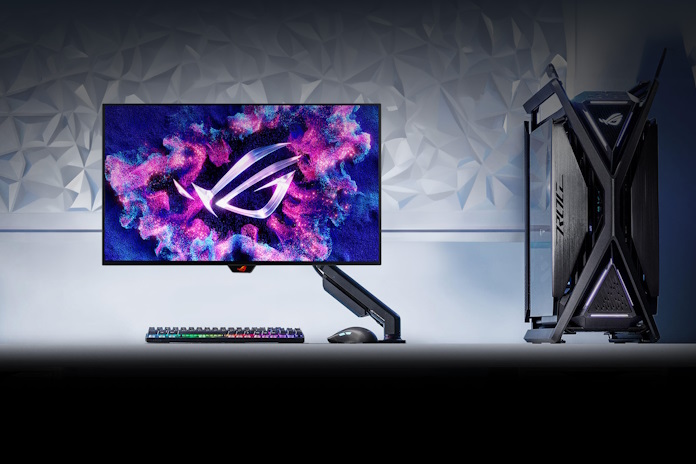With many PC components and specifications, bigger is better. When you’re picking an SSD for your gaming library, deciding between 120mm or 140mm case fans, or selecting the size of an AIO CPU liquid cooling radiator, you should go bigger, given the opportunity. But the resolution of your gaming display is a different beast. Depending on your hardware setup and the games you tend to play, among other factors, a higher resolution isn’t always better.
Gamers tend to fall into two camps when it comes to resolution. First, many enthusiasts champion the sharp, cinematic visual fidelity of 4K. Second many others prefer the snappy performance and practicality of 1440p. As with other elements of building a PC gaming setup, the decision between these two camps isn’t as simple as “bigger is better.”
The case for 4K: visual immersion and future-proofing
The main draw for 4K displays is detail. With a resolution of 3840×2160, 4K monitors pack over 8 million pixels onto the screen. That’s four times the pixel count of 1080p and more than twice that of 1440p, for anyone who’s counting. This higher pixel density results in incredibly sharp imagery, making textures more detailed, edges smoother, and environments more lifelike.
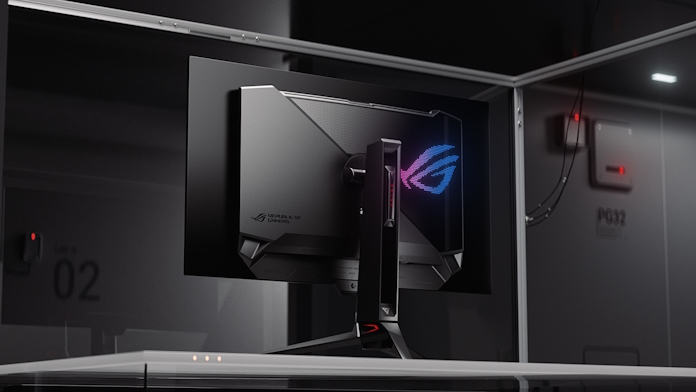
Open-world and story-driven games such as Red Dead Redemption 2, Cyberpunk 2077, and Horizon Forbidden West benefit immensely from the enhanced resolution. In these titles, visual fidelity contributes directly to immersion, and the increased level of detail can elevate your gaming experience to interactive cinema.
Another draw for 4K monitors is the ability to get a bigger panel without sacrificing pixels-per-inch (PPI). When you’re sitting up close to your monitor, 1440p visuals can look a little pixelated. But a 32-inch 4K monitor actually has a higher PPI than a 27-inch 1440p monitor.
4K monitors are a preferred pick for gamers who also use their monitors extensively for productivity and creative work. Text looks crisper and more readable on a monitor with a higher resolution, compared to lower-res options with same panel size. And for those using their display for photo editing, 3D modeling, or video production, the additional screen real estate and sharper resolution of 4K are all-but essential.
Additionally, some gamers gravitate to 4K for the sake of future-proofing. With next-generation consoles like the PlayStation 5 and Xbox Series X pushing 4K gaming as the new standard, and GPUs continuing to increase in performance year over year, investing in a 4K display is a way to stay ahead of the curve.
The limitations of 4K
However, the visual splendor of 4K comes at a cost, primarily in terms of hardware requirements.
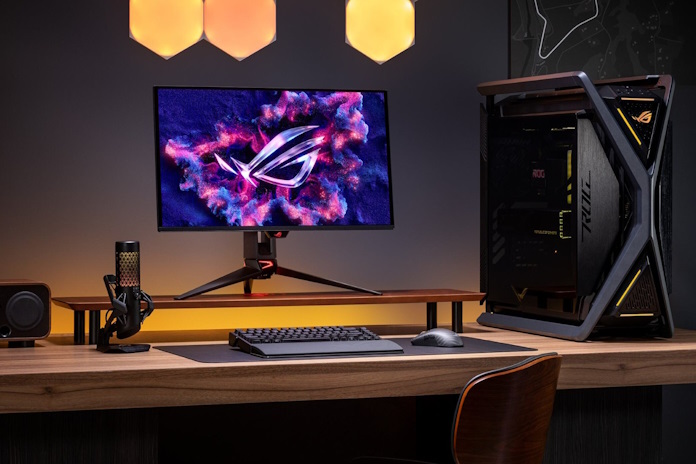
The biggest challenge facing 4K gaming is the strain it places on hardware. Rendering games at 4K resolution requires a powerful graphics card, ample VRAM, and a CPU that can keep pace. Today’s high-end GPUs like the ROG Astral GeForce RTX 5090 can handle 4K gaming without breaking a sweat, but a game like Red Dead Redemption 2 can bring mainstream graphics cards to their knees with the resolution cranked up to 4K.
Now, this is much less of a concern than it used to be, and that’s largely thanks to the AI-powered wizardry of upscaling techniques like NVIDIA DLSS 4 and AMD FSR. These features let your game render at a lower resolution, and then they upscale the imagery to create 4K visuals without 4K GPU strain. With the latest Transformer model, DLSS 4 is particularly good at upscaling to 4K with little-to-no loss in visual quality. If you primarily play single-player AAA adventures and you’ve been on the fence about 4K monitors, DLSS 4 or FSR might be the factor that coaxes you into a higher-res upgrade.
But let’s say that you’re much more focused on competitive games. In titles like Call of Duty, Counter-Strike 2, and Valorant, fluid motion and low input lag matter much more than ultra-detailed scenery. For you, the responsiveness of a higher frame rate probably matters more than the extra sharpness that 4K provides.
And that brings us to 1440p. Offering a balance between performance and visual quality, 1440p has been considered the gaming “sweet spot” for many years now.
The case for 1440p: performance meets practicality
At 2560×1440 resolution, 1440p (QHD) offers a significant visual upgrade over 1080p while being far less demanding than 4K. This makes it an ideal middle ground for gamers who want crisp visuals without sacrificing performance.
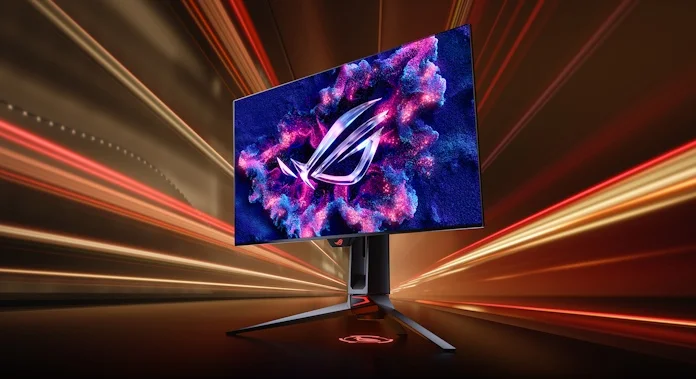
But perhaps the biggest draw for 1440p displays are their potentially sky-high refresh rates. 4K monitors are no slouch in this regard, as 4K 240Hz options are readily available these days, but 1440p monitors can push things even further. The ROG Swift OLED PG27AQDP, for example, pairs its 1440p resolution with refresh rate that’s kicked all the way up to 480Hz. This is a major advantage for gamers who prioritize smooth, responsive gameplay, especially in fast-paced genres like battle royales, MOBAs, or fighting games.
In terms of hardware compatibility, 1440p is accessible to a broader range of systems. Gamers using mid-tier GPUs can enjoy high settings and smooth frame rates in modern games, and that’s before considering what upscaling techniques can bring to the table. This makes 1440p a cost-effective choice for players who want to maximize value without making large sacrifices in performance or visual fidelity.
1440p displays are also quite attractive to gamers on a budget. Generally speaking, 1440p monitors are more affordable than 4K monitors. You’ll get a lot of bang for your buck with a high-refresh rate 1440p gaming monitor.
One size doesn’t fit all, but dual-mode monitors get close
When gamers sit down to pick a monitor, one factor that weighs heavily on their decision is the genre of games that they tend to play most. But while it’s easy to recommend a 1440p monitor to Valorant devotees and a 4K monitor to Clair Obscur: Expedition 33 aficionados, how about the gamers who are just as likely to play one as the other?
Gamers who dabble in a wide variety of genres have long struggled with picking a monitor. Too often, they feel like picking a monitor that’s well-optimized for one style of game means compromises in another. Fortunately, monitor shopping is no longer as binary as it once was. A growing segment of dual-mode monitors now gives you the ability to flip on a dime between two modes, one that prioritizes a high refresh rate and one that prioritizes a high resolution.
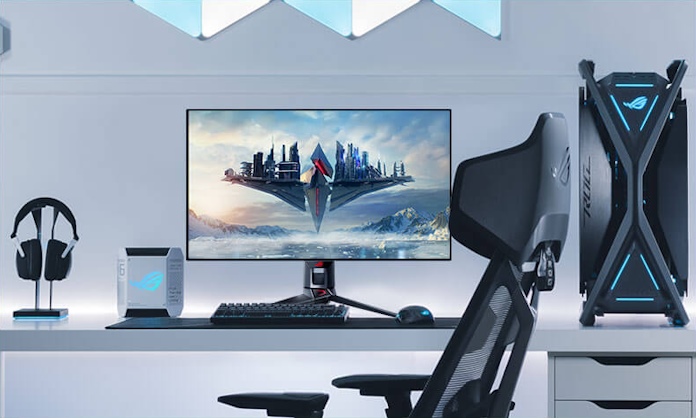
Take the ROG Swift OLED PG32UCDP, for instance. Out of the box, this 32-inch OLED gaming monitor operates at 4K 240Hz, which is perfect for AAA gaming, role-playing games, and everyday computing. Switch to the PG32UCDP’s other mode, either through the dedicated physical button or by enabling “Frame Rate Boost” in the OSD, and you’ll have access to a dazzling 480Hz refresh rate at 1080p. That’s a perfect fit for esports games, where the sky-high refresh rate provides an undeniable competitive advantage over opponents with last-gen display tech.
Perhaps the PG32UCDP’s 32-inch panel is larger than you prefer for esports games. This versatile display has a solution for that, too. Through Aspect Ratio Control, the monitor lets you choose between 24.5-inch or 27-inch imagery, the sizes preferred by many esports professionals.
4K vs 1440p: the verdict
Ultimately, the choice between 4K and 1440p comes down to your priorities, hardware capabilities, and the kinds of experiences you value most. You might end up with a very different monitor than the gamer next door, and that’s okay.
But you’re here for a recommendation, so let’s give you one. Right now, we think that you’ll get more long-term satisfaction from your purchase with a 4K gaming monitor. Tech like NVIDIA DLSS 4 and AMD FSR largely mitigates the performance hit of playing games at this resolution, allowing you to enjoy the immersive detail of 4K images at the fluid, smooth frame rates that you’ve come to expect. That, and 4K monitors are the hands-down winners when it comes to anything else you do with your PC: everyday productivity, content creation, even just browsing the web. And while 4K monitors can’t quite reach the stratospherically high refresh rates of 1440p or 1080p monitors, most folks won’t hit the ceiling of a 4K 240Hz display all that often, and dual-mode monitors are available for those who want the option to flip into a high refresh rate mode.
That said, there are reasons why you might choose a 1440p monitor instead. There are more budget-friendly 1440p display options, for one, making them a tempting pick for value hunters. They’re also a great fit for anyone buying display first and foremost for competitive gaming. If you’re going to spend 99% of your time with your monitor playing Counter-Strike 2, then by all means grab a 1440p display with the highest refresh rate that you can afford.
| Model | Key Features | US | CA |
|---|---|---|---|
| ROG Strix XG27ACG | Affordable 1440p gaming 27-inch 180Hz (OC) | ASUS Best Buy | ASUS Amazon Best Buy |
| ROG Strix OLED XG27AQDMG | Mainstream 1440p gaming OLED panel 27-inch 240Hz | ASUS Newegg Amazon B&H Micro Center | ASUS Amazon Best Buy |
| ROG Swift OLED PG27AQDP | Premium 1440p gaming OLED panel 27-inch 480Hz | ASUS Amazon Micro Center | ASUS Newegg Amazon Best Buy |
| ROG Strix XG27UCG | Mainstream 4K gaming 27-inch dual-mode 4K160Hz / FHD 320Hz | ASUS Amazon Micro Center | ASUS Newegg Amazon |
| ROG Swift OLED PG32UCDM | Premium 4K gaming 32-inch 240Hz | ASUS Newegg Amazon Best Buy B&H Micro Center | ASUS Newegg Amazon Best Buy |

